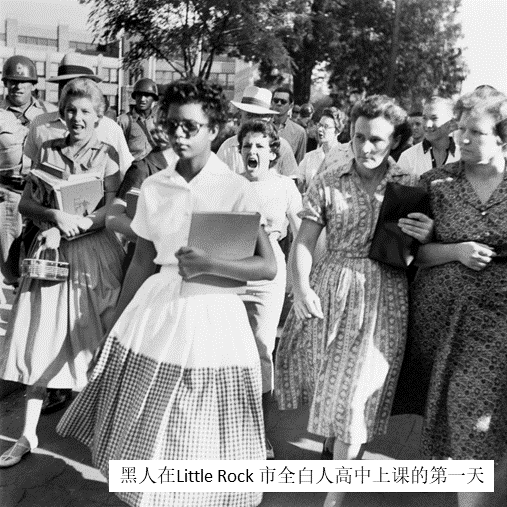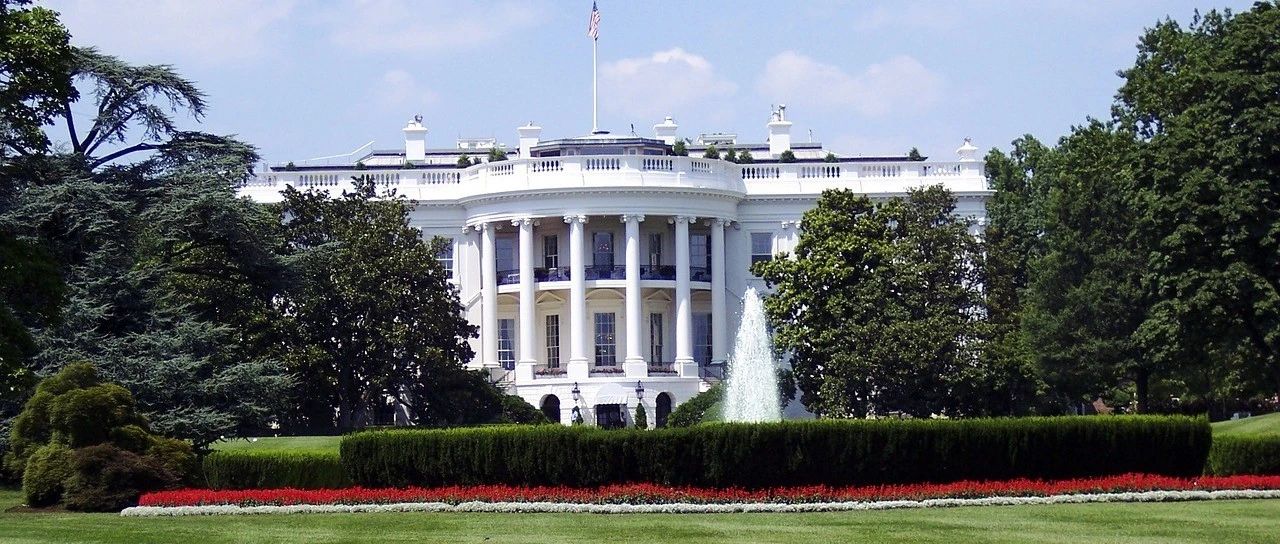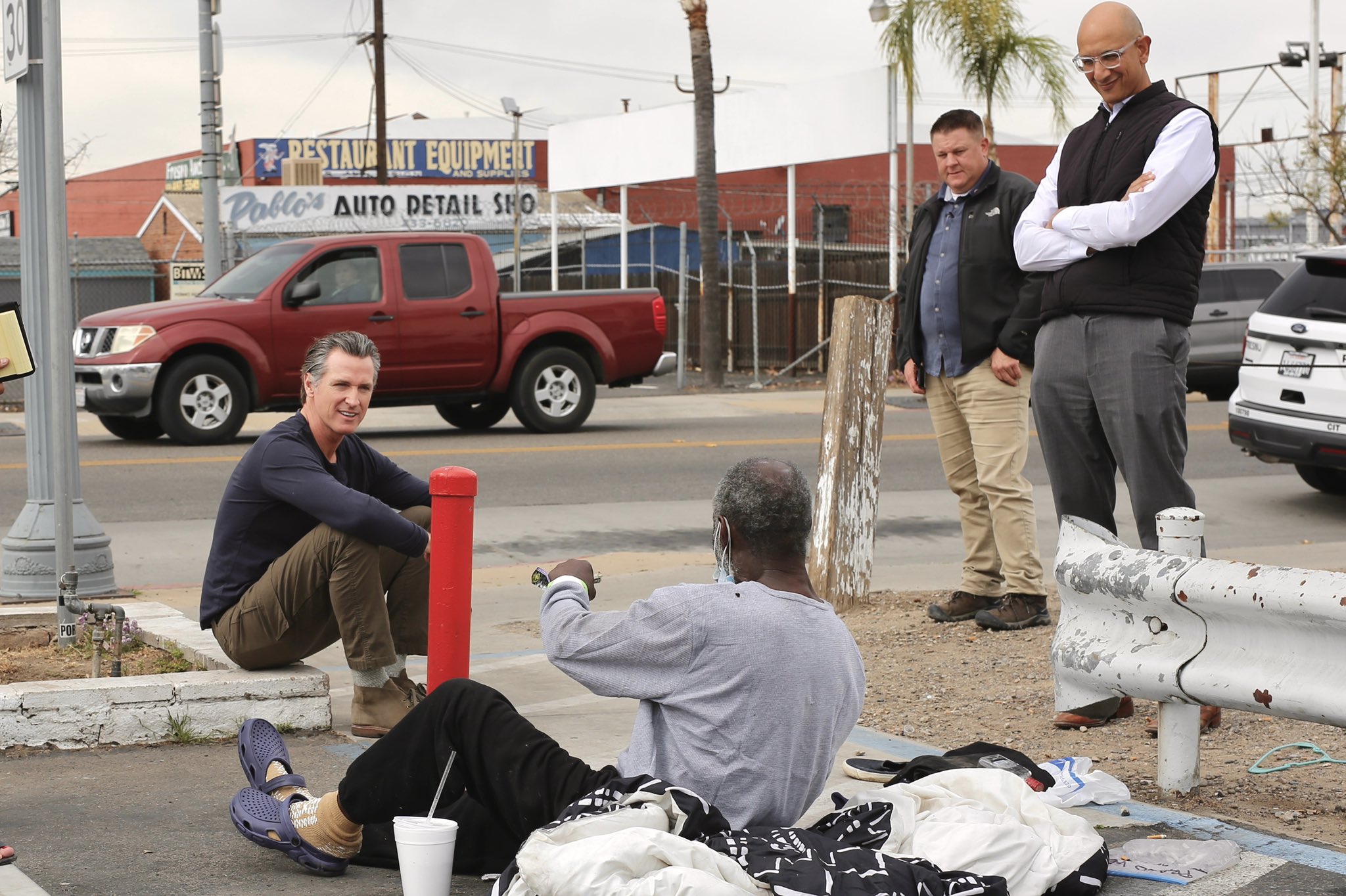by Paul Chan

This is a sketch of the 400-year history of racial injustice white Americans have inflicted upon Black Americans and their resistance. The brevity of this account cannot do justice to the complexity of this history and the depth of this national wound. My purpose is to provide Chinese immigrant readers a starting point for their own exploration of racial injustice in this society.
Slavery (1619-1865)
To satisfy the labor needs of the rapidly growing North American colonies, white settlers imported enslaved Africans as a cheap labor source. The first slave ship from Africa arrived in Jamestown, Virginia in 1619. Slaves were shackled and chained together in their cross-Atlantic voyage. It was reported that nearly one-fifth of them would perish in a voyage because of sickness, starvation, or torture. Some historians estimated that 6 to 7 million slaves were imported to North America and the Caribbean Islands during the 18th-century alone.
Slaves were bought and sold as property. The treatment of slaves was generally brutal. Whipping and rapes were routine. William Allan, an abolitionist, said “cruelty was the rule, and kindness the exception.” The Fugitive Slave Clause (1787) in the Constitution tacitly guaranteed the right to repossess any “person held to service or labor” (an obvious euphemism for slavery).
Slavery had devastating impacts on families. Since slaves had no legal rights, their marriages had no legally protection. The owners’ rights prevailed over slaves’ own human rights. As a result, slave marriages could be torn apart at any time by their owners. For example, slave owners could rape enslaved women. Children of slaves also belonged to the owners, who could sell or gift them away. Understanding these risks, they continued to take leaps of faith of union, driven by passions to form families and create human bonds that could help soften the harsh conditions of slavery.
By the end of the 18th century, many northern states had abolished slavery. But slavery was still vital to the South’s agriculture economy. The 1860 census shows that the slave population of nearly 4 million was 13% of the total population of 31.5 million Americans. Most of the slaves lived in the South and more than half in the cotton-producing states.
With the utter despair Black people faced under slavery, there were also acts of brave and heroic defiance by both Black and white people. Out of hundreds of people who fought slavery, several figures of this period—Frederick Douglass, Harriet Tubman, and John Brown—displayed immense bravery and courage and are still remembered today.
After escaping from slavery in Maryland in 1838, Frederick Douglass became a leader of the abolitionist movement in Massachusetts and New York, gaining fame for his oratory and antislavery writings. He was often known as a living counter example to arguments that slaves lacked the intellectual capacity to function as independent citizens. He was also a supporter of women’s suffrage. He said that he could not accept the right to vote as a black man if women could not also claim that right.
Freed slaves, white abolitionists, and their supporters had established a network of secret routes and safe houses during the early to mid-19th century to assist slaves to escape into free states and Canada. The escape routes and those who aided them are collectively referred to as the Underground Railroad. The legendary Harriet Tubman was born into slavery. She escaped and subsequently made some 13 missions to rescue approximately 70 slaves, including family and friends, using the Underground Railroad. During the Civil War, she served as a scout and spy for the Union Army. The film Harriet is a biographical film about her life.
John Brown, a white abolitionist, had led several uprisings against slaveholders. In October 1859 he led a band of less than 50 men in a raid against the federal arsenal at Harper’s Ferry, Virginia (now West Virginia). Their aim was to capture ammunition for a rebellion against Virginia’s slaveholders. Brown and his men were captured and he was hanged on December 2, 1859. This site is preserved in the Harpers Ferry National Historical Park.
Civil War and the Emancipation (1861-1865)
The Southern states had always wanted to expand slavery into the western territories (for example, Missouri) over the objection of the North. As these territories became states, they upset the political balance between the North and South. In the spring of 1861, the continuing conflicts between North and South over slavery erupted into civil war, with 11 Southern states seceding from the Union and forming the Confederate States of America. Though President Lincoln was strongly against slavery, he sought first to fight to preserve the Union. By the summer of 1862, Lincoln had come to believe he could not avoid the slavery question any longer. On January 1, 1863, he declared the Emancipation Proclamation, officially freeing the slaves within the Confederate States. In the fight for freedom, some 186,000 black soldiers joined the Union Army and 38,000 lost their lives. It was not until 1865 that slavery was formally outlawed in the United States through the 13th Amendment of the Constitution, ending over 200 years of legal slavery. The film Lincoln tells how the President used his political skills to shepherd the passage of the 13th Amendment in Congress.
Reconstruction (1865-1877)
Reconstruction was the effort to reintegrate the former Confederate states and 4 million newly-freed slaves. President Ulysses Grant, elected in 1868, was crucial to the Reconstruction by enforcing the protection of black Americans in the South and combatting the Ku Klux Klan to its near extinction. This period also saw the passage of the Constitution’s 14th Amendment granting citizenship to anyone born in the U.S., and the passage of 15th Amendment guaranteeing a citizen’s right to vote regardless of race, color, or previous condition of being a slave. Several Southern Blacks won elections to state governments and the U.S. Congress during this period. Among the other achievements of this period were the South’s first state-funded public school systems, more equitable taxation legislation, and laws against racial discrimination in public transportation and accommodations.
In less than a decade, however, reactionary forces—including the Ku Klux Klan—would reverse these improvements to black Americans in a violent and widespread backlash that restored white supremacy in the South in the Jim Crow era (see below). This backlash led Harvard Professor Henry Louis Gates, Jr. to conclude that black Americans enjoyed less liberty and equality in 1960 than in 1880.
Jim Crow era (1880-1965)
Between the late-19th and mid-20th centuries, state and local laws—often referred to as Jim Crow laws—enforced racial segregation in the Southern states. They covered education, businesses, religion, marriage, transportation, workplaces, public facilities, and the military. Racial segregation was even upheld by the U.S. Supreme Court in the Plessy versus Ferguson case in 1896. During this period, racial segregation was not just the purview of laws, it was a way of life. Black Americans were relegated to the status of second-class citizens. Even Christian churches taught that whites were the chosen people, Blacks were cursed to be servants, and that god supported racial segregation. Segregation was nationwide. The Southern states differed from the North in that the South used violent means to enforce segregation.
Lynching, a premeditated extrajudicial killing, happened all throughout the slavery and Jim Crow periods. Lynching often took the form of public hanging that would attract a crowd; thus it was less a form of punishment than a means to terrorize. Tuskegee Institute found records of 3446 black lynchings between 1882 and 1968 in the U.S., most of them in the South (http://archive.tuskegee.edu/archive/handle/123456789/511). There were countless other deaths. One of the often forgotten, yet the most brutal, racial incident was the 1921 Tulsa Race Massacre. Up to 300 people in a rich, black neighborhood in Tulsa, Oklahoma were slaughtered by white supremacists; 800 people were wounded and 6000 people illegally interned.
Since the Civil War, there have been attacks—burnings and bombings—of Black churches by white supremacists. The most notable historical attack was the 1963 KKK bombing of the 16th Street Baptist Church in Birmingham, Alabama, killing four young girls. These attacks have not stopped since the Civil Rights Movement. According to a study in the Australian Journal of American Studies, between 1995 and 1997, arson destroyed nearly 200 black churches (https://www.jstor.org/stable/41220080?seq=1). A white supremacist attacked a Black church in Charleston, South Carolina in July 2015, killing nine people. The latest recorded Black-church burnings happened in April 2019 in Louisiana. Three churches were set fire.
One example that reflected on segregation during this era was the Negro Motorist Green book. Many Black people took to driving, in part to avoid the insult of segregation on public transportation. When white-owned hotels refused to serve them, they often had to sleep in their cars. The Green Book cataloged black-owned businesses around the country that would serve black customers, so they could eat in restaurants and stay in hotels. The film Green Book is inspired by the true story of Black pianist Don Shirley touring in the Deep South in 1962. Since he could not dine and stay in hotel venues where he performed, he had to rely on the Green Book for guidance.
There is a recent controversy about the large number of Confederate monuments dotting the South and whether or not they should be removed. These monuments, erected around the turn of the 20th century and during the Civil Rights Movement, are far from being monuments of historic events and people, but were created by Jim Crow governments and white supremacist groups to pay tribute to slavery and to assert superiority over blacks, says a Smithsonian Magazine article (https://www.smithsonianmag.com/smart-news/confederate-monuments-across-country-coming-down-180975052/). According to the Southern Poverty Law Center (https://www.splcenter.org/data-projects/whose-heritage), there are about 1700 Confederate monuments in this country, mostly in the Southern states.
The Civil Rights Movement (1954–1968)
The 1954 U.S. Supreme Court case Brown versus Board of Education established that racial segregation in public schools is unconstitutional. It signaled the beginning of the end of the Jim Crow era. But it is still far from over. A series of incremental, yet groundbreaking, struggles followed. Together, they made up the Civil Rights Movement. Below are only a few examples of events during that movement.
Segregation on public bus was widespread in the South and there had been several legal challenges to local segregation. One significant event, in December 1955, concerned Rosa Park’s refusal to move to the back of a bus in Montgomery, Alabama, as local segregation law mandated for Black people. She was convicted and fined 14 dollars. Martin Luther King Jr., then a new pastor in Montgomery’s Dexter Avenue Baptist Church, led the year-long boycott of the Montgomery public bus with the support from the city’s Black leaders. In November 1956, the Supreme Court decided that the Alabama and Montgomery laws segregating buses were unconstitutional.
Another event in 1957 turned the tide in public schools. Nine Black students enrolled at the then all-white Central High School in Little Rock, Arkansas, in September 1957, as a test of Brown v. Board of Education. On September 4, 1957, the first day of class at Central High, Arkansas Governor called in the National Guard to block the Black students’ entry into the school. Later that month, President Dwight D. Eisenhower sent in federal troops to escort the Black students to school. These students were later known as the Little Rock Nine.
Many sit-ins also took place during the Civil Rights Movement. On February 1960, four Black college students sat down at the whites-only lunch counter at the Greensboro Woolworth’s store. Denied service, they refused to leave until the store closed. They returned in subsequent days with more students. Publicity of the Greensboro sit-ins sparked a sit-in movement throughout the South and into the North. By the end of March, the movement had spread to 55 cities in 13 states. There was widespread violence by white supremacists to break up these sit-ins. By the summer, dining facilities across the South, including the Greensboro Woolworth’s, were forced to integrate. These four Black students were later known as the Greensboro Four.
A bus carrying black and white passengers from Washington, DC was attacked by a white mob outside a small town in Alabama on May 14, 1961. The mob punctured the bus tires, smashed the windows, and threw a fire-bomb into the bus. When the bus caught fire, the mob blocked the door to prevent the passengers from fleeing. When the gas tank exploded and forced the mob to retreat, they beat the fleeing passengers with baseball bats. On the same day, another bus carrying black and white passengers arrived in Birmingham, Alabama. These passengers were attacked at the station’s white-only restaurant. At that time, the U.S. Supreme Court had already ruled that segregation on public transportation was unconstitutional. These two groups of passengers were the first “Freedom Riders” among 400 volunteers. Since then, in 1961, Freedom Riders repeatedly took passenger buses in the South to peacefully challenge the segregation system of the Jim Crow era.
Segregation was also an issue in higher education. In September 1962, a Black man, James Meredith, won a lawsuit to be admitted to the whites-only University of Mississippi. He attempted to enter campus in late September but was blocked by order from the Mississippi Governor. On September 30, the U.S. Attorney General Robert Kennedy sent in Federal agents to escort Meredith into campus. White students started an armed riot to protest, resulting in 2 civilian deaths, 160 others injured, and 28 federal agents with gunshot wounds. Meredith could only begin classes after the Federal Government sent in troops to quell the riot.
A series of large-scale protests on racial injustice were organized in the 60s, as a culmination of people’s frustrations and hopes for the future. In March 1963, Martin Luther King led a march to protest segregation in Birmingham, Alabama. Police confronted the peaceful protesters with fire hose and police dogs. Television broadcast of this confrontation shook the whole nation. Martin Luther King was arrested and jailed for violating the court order to forbid the march. He was released in April only after the Department of Justice intervened. While in jail, Martin Luther King wrote, and his attorney smuggled out, the Letter from a Birmingham Jail. It was published in public media nationwide and is now a historically significant document. In August of the same year, a rally in front of the Lincoln Memorial in Washington, DC was organized to demand civil and economic rights, and there Martin Luther King delivered the I have a dream speech, in which he said, “I have a dream that my four little children will one day live in a nation where they will not be judged by the color of their skin but by the content of their character.”
During the Jim Crow period, Southern states passed laws to erect barriers for Black people to vote. These laws required literacy tests or property ownership for voting, for example. In 1965, three marches took place along the 54-mile highway from Selma, Alabama to the state capital Montgomery to demand equal voting rights. During the first march, on March 7, 1965, Sunday, state troopers, including mounted police, violently charged against the 600 peaceful protesters. John Lewis, a leader of the march, suffered a fractured skull in the police attack. He later had been a Representative in Congress since 1987 and died of cancer recently. This attack, later known as the Bloody Sunday, contributed to the passage that year of the Voting Rights Act. The stories of this march were captured in the film Selma.
With advocacy from Martin Luther King, the Civil Rights Act of 1964, initiated by President John F. Kennedy, was signed into law by President Lyndon B. Johnson. It outlaws discrimination based on race, color, religion, sex, and national origin; prohibits unequal application of voter registration requirements; and racial segregation in schools, employment, and public accommodations.
The Civil Rights Act was reinforced by Loving versus Virginia. A Black woman, Mildred, and her white husband, Richard Loving, were sentenced to a year in prison for marrying each other in the state of Virginia. The 1967 U.S. Supreme Court case decided that laws banning interracial marriages were unconstitutional. The romance between the Lovings and the court case are the subjects of the film Loving.
The above brief account of the Civil Rights Movement does not do justice to its achievements and sacrifices, including many lives, of Blacks and their white supporters. By 1968, the nation’s attention had turned to ending the Vietnam War. With the assassination of Martin Luther King in April 1968, the movement ran out of momentum.
Black Lives Matter (2013-present)
Racial conflicts have continued long after the Civil Rights Movements, sometimes burning like open fire and often simmering just below the surface, resulting in countless deaths of unarmed Black citizens at the hands of police and white supremacists.
On the night of February 26, 2012, in Sanford, Florida, George Zimmerman fatally shot Trayvon Martin, a 17-year-old unarmed Black student. In a widely reported trial, Zimmerman was charged with murder, but acquitted after claiming self-defense. Black Lives Matter (BLM), as an organization and then as a movement, was founded in 2013 in response to this acquittal with the mission to counter white supremacy and systemic racism. Black Americans dying in the hands of white supremacists and police brutality has been considered normal occurrences for quite some time. A recent study published in the Proceedings of the National Academy of Sciences (U.S.) shows that over the course of a lifetime, about 1 in every 1,000 Black men can expect to be killed by police (https://www.pnas.org/content/116/34/16793).
Racial injustice has casted a long shadow in our society. We have been trying, though unsuccessfully thus far, to shake off this shadow for so long that some writers have referred to this sickness as the America’s Original Sin. Original Sin, in Christian doctrine, is the sin into which each human is born. This sin stemmed from Adam and Eve’s disobedience of God in the Garden of Eden. As far back as in 1619, America has been plagued by racial injustice. It seems that every generation ever since and every generation into the future would be born with this Original Sin.
Racial injustice has left many Black Americans without a good education, jobs, and homes. Perhaps most visible and dramatic is the treatment of black people by police and white supremacists that often results in deaths. Before the killing of George Floyd on May 25, 2020, there was Trayvon Martin in Florida; Michael Brown in Missouri; Eric Garner in New York; Tamir Rice in Cleveland; Freddie Gray in Baltimore; Sandra Bland in Texas; Breonna Taylor in Kentucky; Ahmaud Arbery in Georgia; Elijah McClain in Colorado, and countless others not known to us. In just months after George Floyd’s murder, several other deaths of Black people in the hands of police have occurred.
One hundred and fifty-five years after the end of Civil War, at which time slavery was officially abolished, the Black and white schism is still wide and deep. Even today, a short trip to a neighborhood store might cause a Black person’s life. It is widely known that all Black parents have had “the talk” with their children about how to behave with police—“Keep your hands open and in front of you, don’t run and don’t make any sudden moves, shut your mouth, be respectful and say ‘sir’”. White parents don’t need this talk with their kids, nor Asian parents. Renowned Black American writer James Baldwin said that if a white person said “give me liberty, or give me death”, the world would applaud him. If a Black person said “give me liberty, or give me death”, he might just get death. Martin Luther King’s Letter from a Birmingham Jail said that segregation gives the segregator a false sense of superiority and the segregated a false sense of inferiority. These are the stark contrasts between the experiences of Black and white people, even today.
Racial injustice against Black Americans is not always overt. More subtle forms of injustice include discriminations in today’s housing, loan approval, education, childcare, racial profiling, healthcare, and employment. Permeated throughout the fabric of society, covert racial injustice is a form of hidden aggressiveness by the white and non-white population that continues to disadvantage and put-down the Black population.
Epilogue
One thing that is common in the history of Black Americans is violence, and still is. Not just Black Americans suffered from injustice from racism from white people. Native Americans, Hispanics, and Asians—all People of Color—are subjected to varying degree of racial injustice.
How do we see our struggle compared to that of Black people? The journey of early Chinese immigrants to America was very unlike those of Africans, who came to America in chains and bondage. Chinese first came to the U.S. in the 1840s as free laborers in the Gold Rush and then for building the Transcontinental Railroads. Our forebears have suffered from racial injustice; but theirs was nothing compared to the injustice inflicted on Black Americans. With a much lighter burden of racial injustice, Chinese Americans have been able to quickly rise economically, if not yet politically.
At this time, BLM is no longer just an organization or a movement. It is a cry for justice from people on the verge of hopelessness, a cry against police brutality, and a cry for the simple right to stay alive. Why do we still have to question these motives?
**
Raising awareness of racial injustice for Chinese immigrants through films
The films below on racial conditions in the U.S. are not all based on true stories, but they all reflect the racial conditions of the time they represent. In the order of this history, they are:
- Amistad (about slave trade)
- 12 Years a Slave (the experience of a slave)
- Harriet (the Underground Railroad)
- Glory (the Civil War)
- Gettysburg (the Civil War)
- Lincoln (the 13th Amendment)
- To Kill a Mockingbird (racial injustice)
- Green Book (racial injustice)
- Loving (racial injustice)
- The Long Walk Home (the Civil Rights movement)
- Mississippi Burning (the Civil Rights movement)
- Selma (the Civil Rights movement)
- Malcom X (the Civil Rights movement)
- I Am Not Your Negro (documentary, racism in the U.S.)
—August 2020



